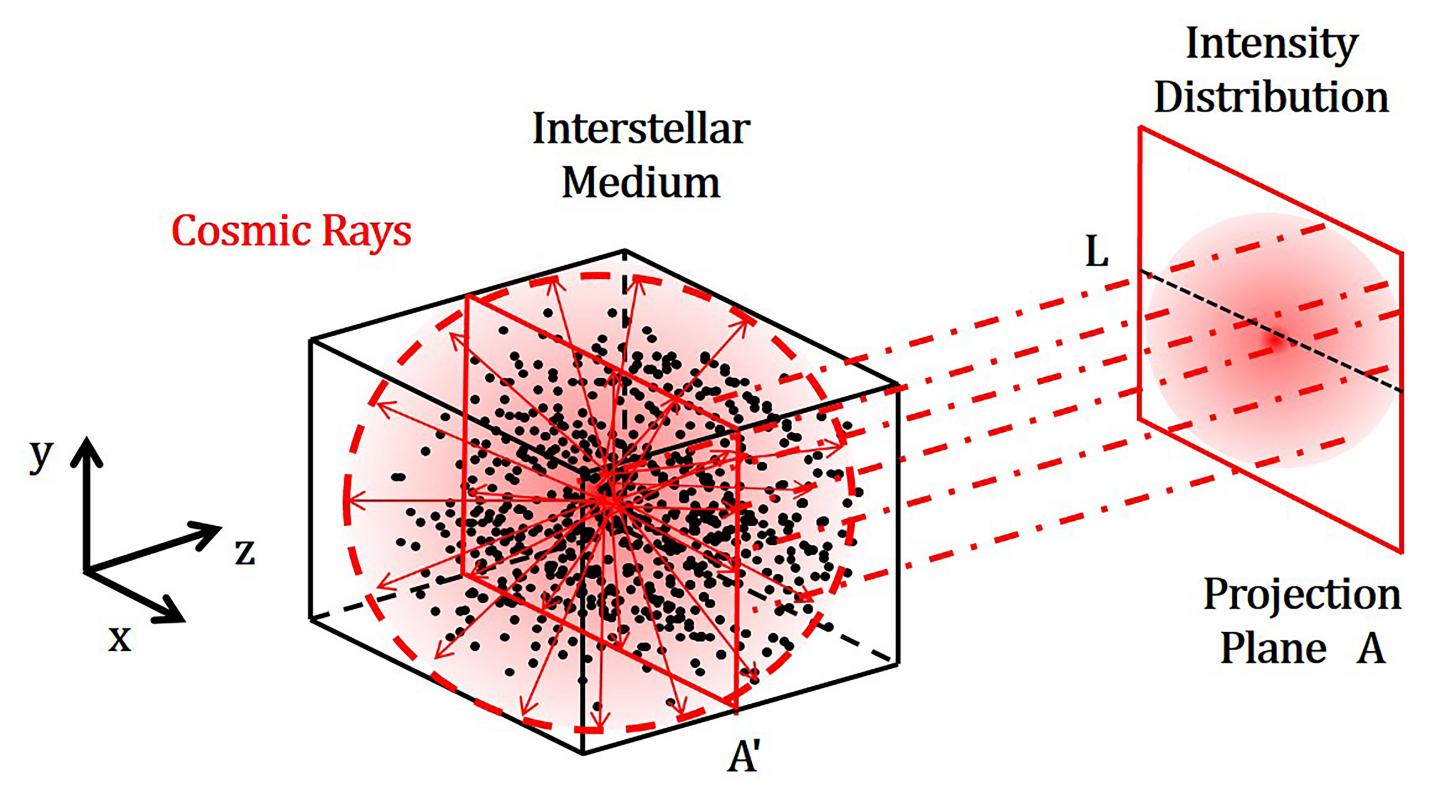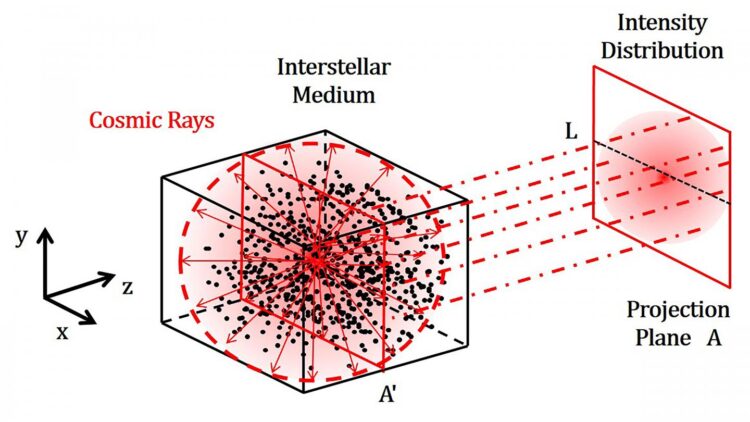Simulation model provides first step in developing algorithms to enhance detection methods.

Credit: Salvatore Buonocore
WASHINGTON, May 25, 2021 — Cosmic rays are high-energy atomic particles continually bombarding Earth’s surface at nearly the speed of light. Our planet’s magnetic field shields the surface from most of the radiation generated by these particles. Still, cosmic rays can cause electronic malfunctions and are the leading concern in planning for space missions.
Researchers know cosmic rays originate from the multitude of stars in the Milky Way, including our sun, and other galaxies. The difficulty is tracing the particles to specific sources, because the turbulence of interstellar gas, plasma, and dust causes them to scatter and rescatter in different directions.
In AIP Advances, by AIP Publishing, University of Notre Dame researchers developed a simulation model to better understand these and other cosmic ray transport characteristics, with the goal of developing algorithms to enhance existing detection techniques.
Brownian motion theory is generally employed to study cosmic ray trajectories. Much like the random motion of pollen particles in a pond, collisions between cosmic rays within fluctuating magnetic fields cause the particles to propel in different directions.
But this classic diffusion approach does not adequately address the different propagation rates affected by diverse interstellar environments and long spells of cosmic voids. Particles can become trapped for a time in magnetic fields, which slow them down, while others are thrust into higher speeds through star explosions.
To address the complex nature of cosmic ray travel, the researchers use a stochastic scattering model, a collection of random variables that evolve over time. The model is based on geometric Brownian motion, a classic diffusion theory combined with a slight trajectory drift in one direction.
In their first experiment, they simulated cosmic rays moving through interstellar space and interacting with localized magnetized clouds, represented as tubes. The rays travel undisturbed over a long period of time. They are interrupted by chaotic interaction with the magnetized clouds, resulting in some rays reemitting in random directions and others remaining trapped.
Monte Carlo numerical analysis, based on repeated random sampling, revealed ranges of density and reemission strengths of the interstellar magnetic clouds, leading to skewed, or heavy-tailed, distributions of the propagating cosmic rays.
The analysis denotes marked superdiffusive behavior. The model’s predictions agree well with known transport properties in complex interstellar media.
“Our model provides valuable insights on the nature of complex environments crossed by cosmic rays and could help advance current detection techniques,” author Salvatore Buonocore said.
###
The article “Anomalous diffusion of cosmic rays: A geometric approach” is authored by Salvatore Buonocore and Mihir Sen. The article will appear in AIP Advances on May 25, 2021 (DOI: 10.1063/5.0049401). After that date, it can be accessed at https:/
ABOUT THE JOURNAL
AIP Advances is an open access journal publishing in all areas of physical sciences–applied, theoretical, and experimental. The inclusive scope of AIP Advances makes it an essential outlet for scientists across the physical sciences. See https:/
Media Contact
Larry Frum
[email protected]
Related Journal Article
http://dx.





